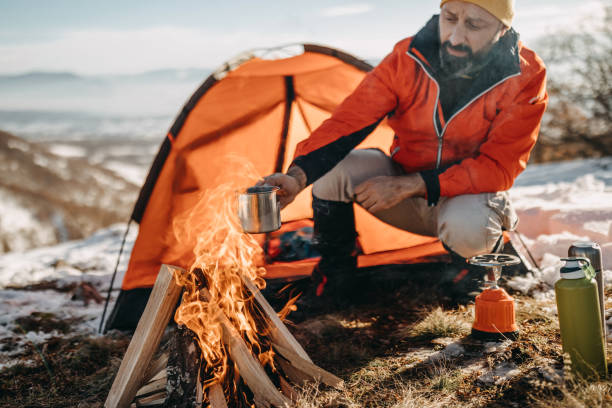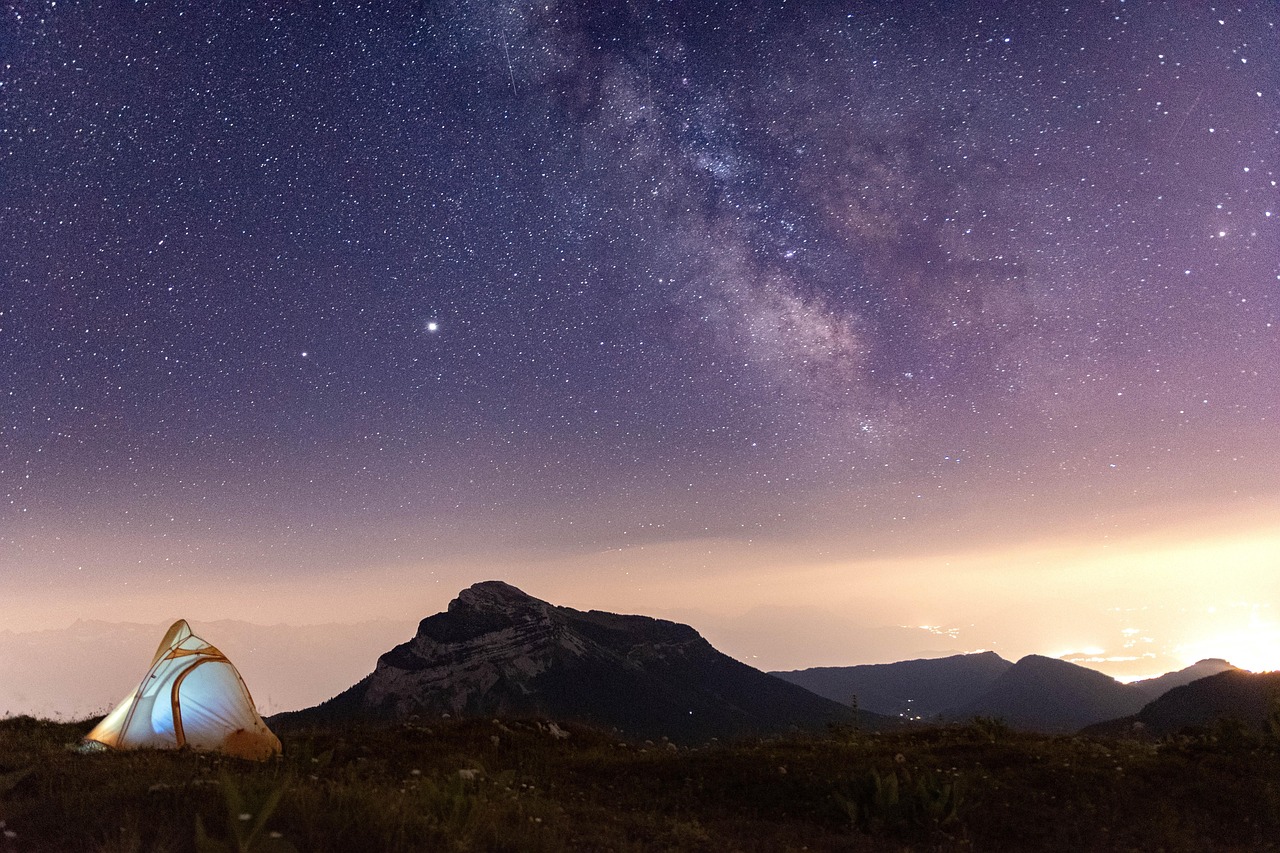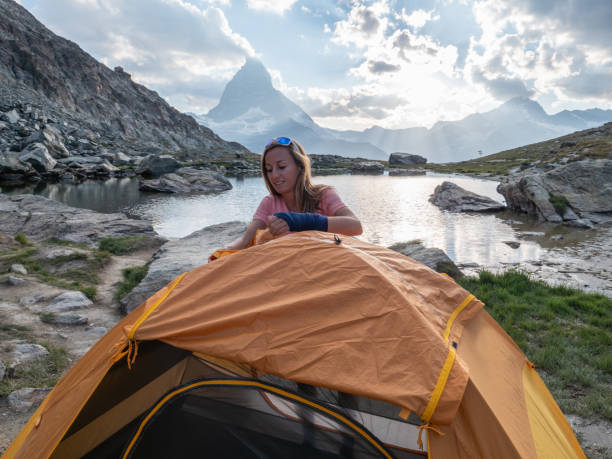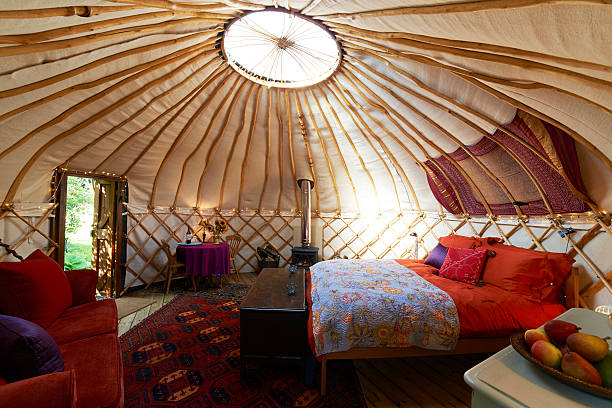If you’ve ever spent a winter night shivering inside a regular tent, you already know—cold weather camping isn’t for the faint-hearted. We’ve been there. Bundled in thermal layers, buried in sleeping bags, still feeling the cold creep in. That’s why we went on a mission to find insulated tents for winter camping that actually work in the cold—and not just on paper, but in real, frosty, sub-zero outdoor conditions.
So we packed our gear, loaded up on hot cocoa and hand warmers, and tested seven best insulated tents across various winter camping trips—snow-covered forests, frosty lakesides, and windy ridgelines. Some were cozy cocoons we didn’t want to leave. Others… well, let’s just say they didn’t make the cut.
What follows is our honest review of the insulated tents for camping that actually kept us warm. We’re talking real comfort, smart design, and no-fuss setups—because when it’s freezing outside, every minute counts. If you’ve been hunting for a winter-ready insulated winter tent that’ll keep you toasty without turning your camping trip into a survival challenge, read on. These are the tents that passed our cold-weather test.
Table of Contents
- Crua Culla Maxx Camping Tent
- Clostnature Libra Backpacking Tent
- Toogh Instant Camping Tent
- ShinHye Backpacking Tent
- Toogh Camping Tent
- OneTigris Stella Tent
- POMOLY Camping Hot Tent
- Our Verdict!
- How to Choose the Best Insulated Tents for Winter Camping
- Thermal Insulation That Works—Not Just Hype
- Weatherproof Materials and Solid Structure
- Ventilation Without Losing Warmth
- Are insulated tents worth it?
- What kind of tent is best for cold weather?
- What is the best material to insulate a tent?
7
Crua Culla Maxx Camping Tent
Our winter trip to the lake in late November was colder than expected—night temps dropped to the low 20s, and the wind didn’t let up. Luckily, we had the Crua Culla Maxx Camping Tent with us, and honestly, it felt like a game-changer. This isn’t a standalone tent—it’s an inner insulated tent that transforms your regular 3-person shelter into a climate-controlled haven.
We pitched our outer tent first and then slipped the Culla Maxx inside. Setup was surprisingly fast—no fiddling with complicated gear. It inflated and settled in place within minutes. The real magic, though, was the insulation. The breathable polyester fabric combined with the 450g/m² insulation created this cozy warmth that trapped our body heat without making it stuffy. Even when the wind howled outside, it was calm and toasty inside.
One of our favorite things? The blackout feature. Once zipped in, it was like a sensory retreat. No light, no distractions—just uninterrupted sleep. And the internal pockets made organizing small essentials like gloves, headlamps, and midnight snacks super easy.
After using the Culla Maxx, we realized something—we’d just expanded our camping season. No more waiting for spring. This thing opened the door to four-season camping in comfort. It’s bulky, sure, but if you’re base camping or car camping in cold temps, it’s worth every inch of trunk space.
Check out the official listing on the brand store for further details on the product.
Pros:
✅ Excellent insulation for extreme cold
✅ Blocks light and dampens outside noise
✅ Sets up inside other tents for versatility
✅ Excellant thermal tent for winter camping
Cons:
❌ Heavy and bulky for backpacking
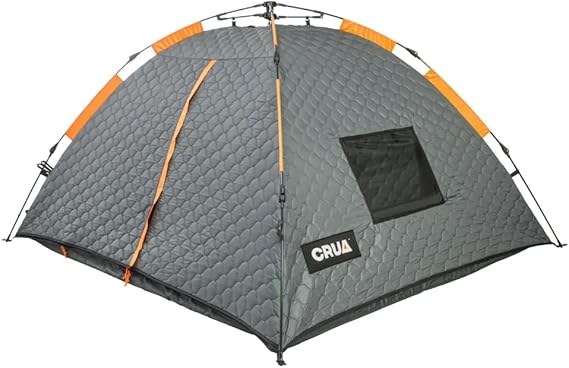
6
Clostnature Libra Backpacking Tent
Easiest Setup. For our lightweight backpacking trip in the Pacific Northwest, we needed something that could handle spring chill and mountain mist without weighing us down. The Clostnature Libra Backpacking Tent surprised us. This 4-season, 1-person tent only weighs around 4.4 lbs and yet handled cold and damp conditions like a pro.
We set it up solo in under 10 minutes—even with numb fingers—which made it perfect after a long hike. The snow flaps helped seal out the ground chill, and the PU 5000 coating kept everything dry, even when frost started to form on the exterior in the early morning.
Inside, there was just enough room for one person and a big dog (yes, our furry buddy came along). The double-layered doors and side vestibules offered solid ventilation and extra gear space. We stashed our boots and pack outside and kept the interior uncluttered and warm. It wasn’t luxurious, but it was warm, efficient, and reliable—which is exactly what we wanted for this trip.
This all weather insulated tent is not for lounging, but for a solo hiker needing cold-weather reliability in a lightweight setup? The Libra absolutely delivered. And when it was time to move, packing it down was easy—into the bag and straight into the backpack without wrestling.
See the official listing on the brand website and analyze the specifications in detail.
Pros:
✅ Lightweight yet strong enough for winter
✅ Affordable 4-season option
✅ Dual vestibules for gear storage
Cons:
❌ Not ideal for heavy snow loads
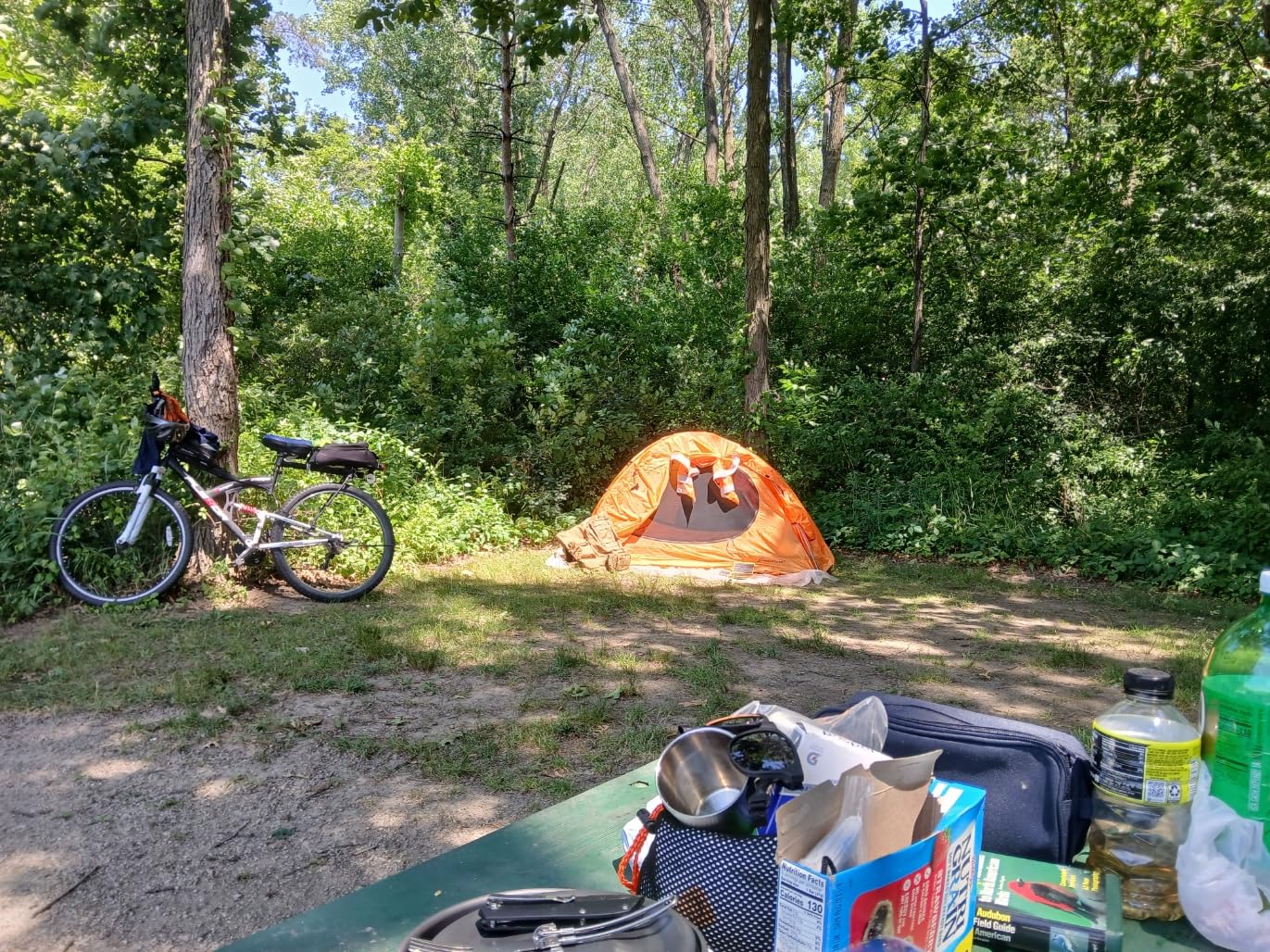
5
Toogh Instant Camping Tent
We took the Toogh Instant Camping Tent with us on a snowy overnight near the trailhead—no deep backcountry trekking, but definitely some wild weather. The wind howled through the trees, and light snow started falling just as we were setting up. Here’s the thing: the Toogh doesn’t pop up in a true 60 seconds if you’re using it for the first time—but once you get the hang of it, setup and takedown are a breeze.
This tent has a hexagonal shape that doesn’t just look cool—it stands firm against wind. Inside, the double-layer design with high-density Oxford fabric kept us dry and warm, and the foil-like inner coating helped block out light while adding an extra layer of warmth.
One nice surprise? The ventilation. There were enough zippered windows to get a solid cross breeze when needed without compromising insulation. And the dual doors made getting in and out with winter boots and gear a lot less annoying.
We fit two adults comfortably, and while our queen air mattress took up most of the space, the vestibule poles were a nice touch—they gave us a covered area to stash gear outside the tent.
For the price, this tent insulation for winter punches above its weight. It’s waterproof, wind-resistant, and packs a lot of features into a compact, good-looking design. If you’re camping in cold but not arctic conditions and want something fast and reliable, this is a great pick.
Pros:
✅ Pops up in under a minute
✅ Waterproof with strong weather resistance
✅ Great for small families or couples
✅ Insulated extreme cold weather tents
Cons:
❌ Lacks insulation for freezing temps
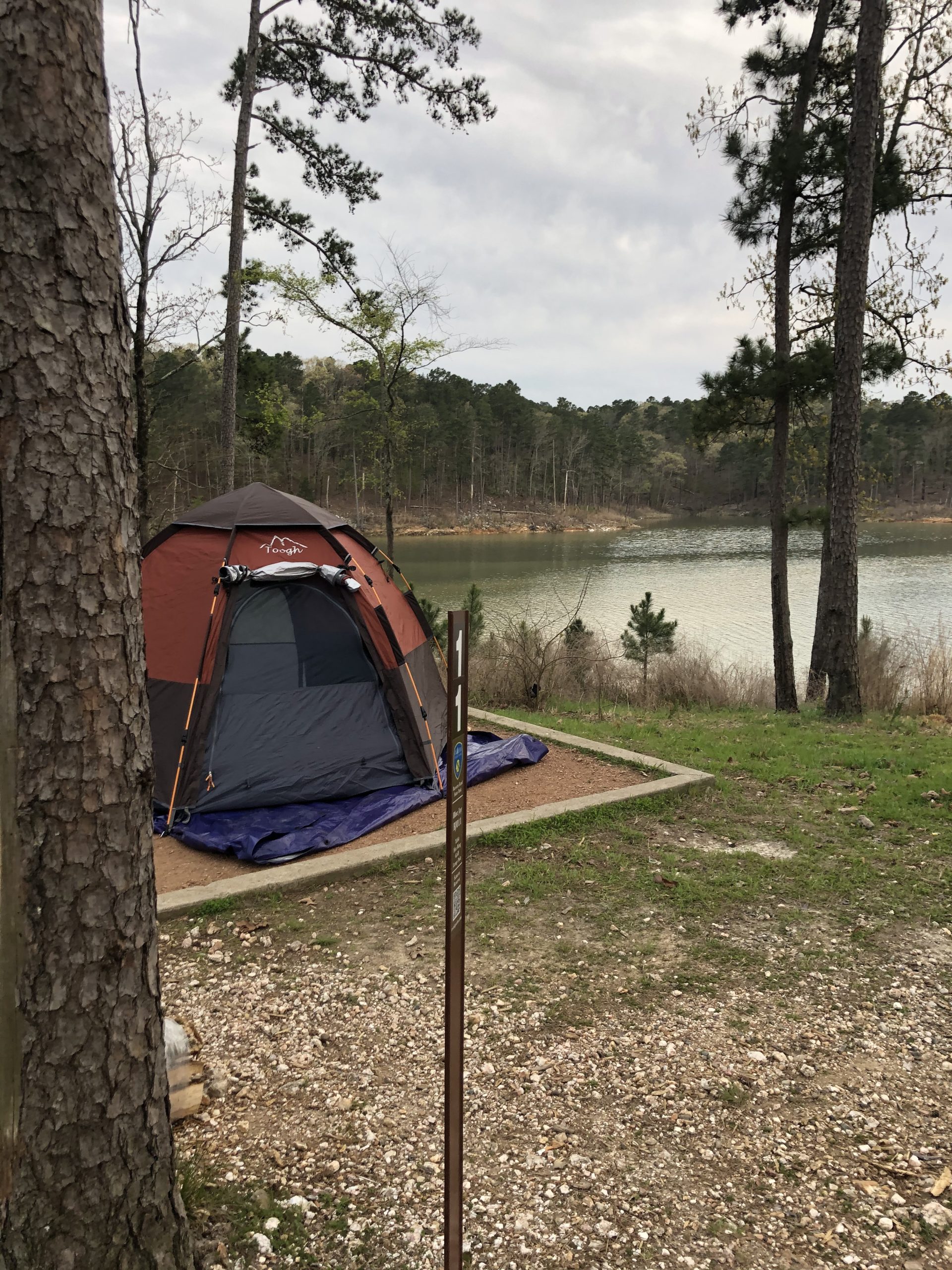
4
ShinHye Backpacking Tent
We didn’t expect much from the ShinHye Backpacking Tent—honestly, it looked like a lightweight tent better suited for spring and fall. But when we took it on a weekend winter stargazing trip, it held up surprisingly well. Temperatures dipped into the 30s overnight, and while we wouldn’t take this into a blizzard, it managed the chill with style.
The snow skirt was a lifesaver—keeping cold wind from sneaking in under the fly. The PU 5000mm waterproof rating was tested by some light sleet, and we stayed dry through it all. Setup was no sweat, even for our friend who had never pitched a tent before. It’s compact and light enough to toss in the trunk or strap to a pack.
Inside, the space was a bit tight for two full-grown adults and gear, but it worked fine for one adult and one shorter camper. There’s a light hook and a mesh gear pocket inside that helped keep the essentials off the floor, and the ventilation kept condensation at bay.
While it doesn’t have the hardcore winter credentials of more expensive models, it’s great for light winter camping and late-fall trips. If you’re new to cold-weather camping or on a budget, the ShinHye tent is an excellent place to start—and you won’t feel like you’ve compromised on safety or comfort.
Here’s a detailed review of the product by Space Star Review on YouTube. Do watch!
Pros:
✅ Double-wall design traps warmth well
✅ Lightweight for alpine use
✅ Withstands moderate snow and wind
✅ Great all weather insulated tent
Cons:
❌ Limited space for gear inside
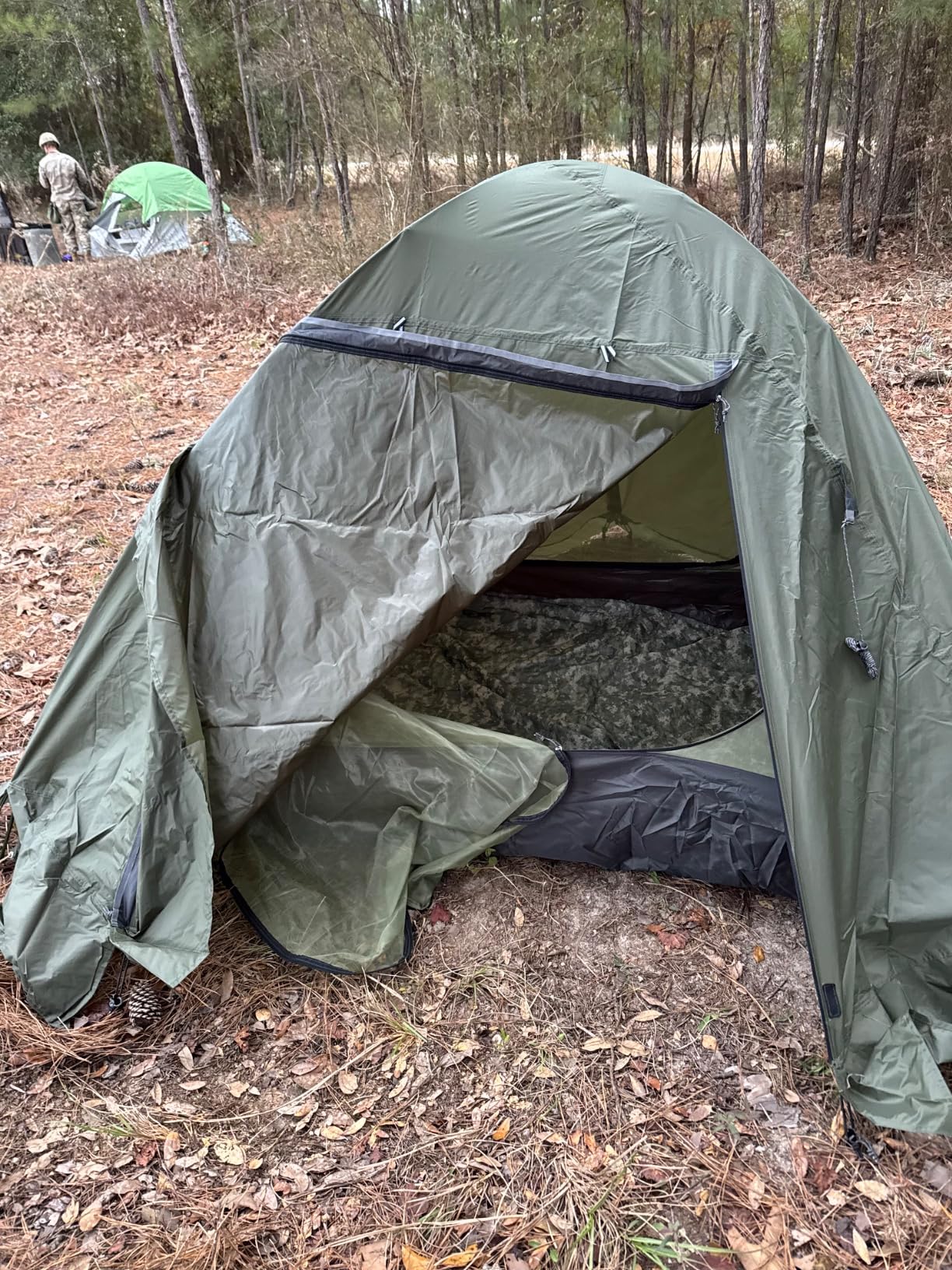
3
Toogh Camping Tent
This was the tent we brought on a family-style weekend camping trip in early winter—no snow on the ground, but cold enough to see our breath and crave extra warmth at night. We wanted something quick to pitch, roomy for two adults plus gear, and warm enough to not feel like we were roughing it. The Toogh 4-Person Instant Tent fit that bill almost perfectly.
Setup took about 60 seconds flat. No joke. The telescopic poles are genius—no wrestling with sleeves or confusing pole angles. It just popped up with a satisfying click. The tent’s square 8×8 ft footprint made it feel more like a cozy cabin than a tent, and the 67-inch peak height meant we could actually stand up and change clothes like civilized people.
Inside, it was surprisingly warm and draft-free thanks to the high-density Oxford cloth, PU-taped seams, and welded corner floor. It handled an unexpected drizzle like a champ—zero leaks, zero dampness. And even though it’s technically not an “insulated” tent in the traditional sense, the tight rainfly coverage and well-designed seams held in heat way better than expected.
On clear nights, we rolled back the rainfly and just stared through the full mesh top at a star-drenched sky—definitely one of our favorite parts of the trip. And when it got chilly, we zipped up tight and stayed warm with just our 3-season sleeping bags.
It’s not perfect—the ground-level ventilation could be better, and in heavier snow, this isn’t your Arctic-ready fortress—but for most cold-weather weekends, it’s reliable, super easy to manage, and gives you just enough luxury to make winter camping feel fun, not frosty.
Also, feel free to browse our exclusive round up of the Best Camping Tents Under $200 (Tried and Tested)!
Pros:
✅ Instant setup with roomy interior
✅ Rainfly covers well and retains heat
✅ Surprisingly warm for a non-insulated tent
Cons:
❌ Poor ventilation in cold, wet conditions
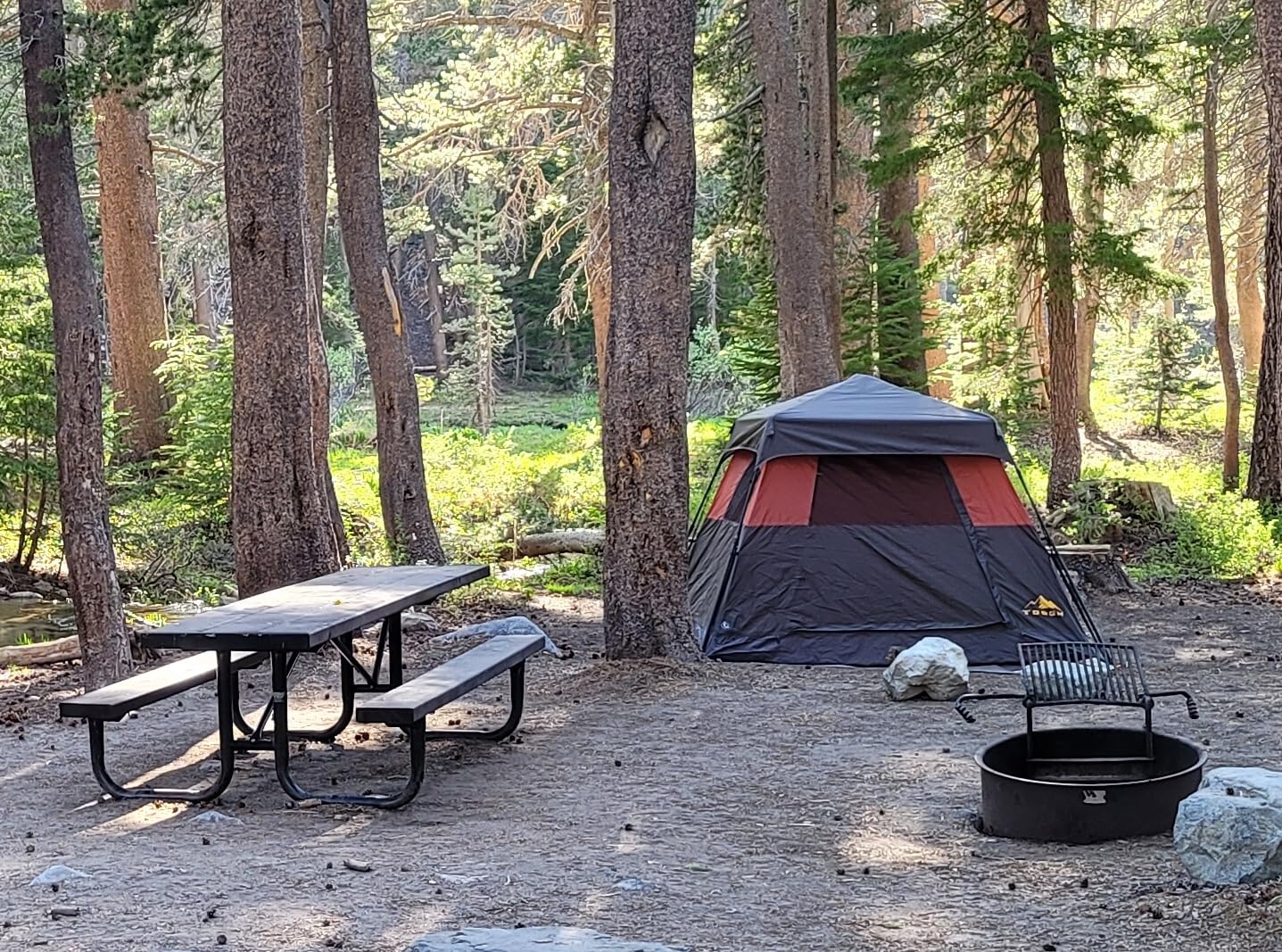
2
OneTigris Stella Tent
Best Sturdiness. We took the OneTigris Stella Tent on a solo desert canyon trip in late fall, where temperatures at night dipped into the low 20s and wind funneled through the valley like a freight train. Let me say this straight: for something that weighs around 4.4 lbs, this tent held its own better than some bulkier, more expensive rigs we’ve tested.
The Stella’s body is made of 20D nylon with a silicone coating, and it has a 40D nylon bottom—tough enough to pitch on cold, rocky ground without stressing about tears or punctures. It felt solid and surprisingly insulated for a single-wall design. There’s a small mesh patch at the top of each door, but not much else in the way of ventilation—which was exactly what we needed to keep the heat in.
This tent’s real strength is its versatility. You can use it in warmer seasons too—just ditch the outer fly and let the inner breathe. But where it truly impressed us was in its heat retention compared to similar REI and Big Agnes tents. With the same sleeping bag and ground pad, we were far cozier inside the Stella.
That said, it’s not without quirks. The mesh pockets aren’t the most secure, and we wished there was more overhead storage. But those are minor gripes. For the price, the Stella is an absolute win for backpackers and cold-weather campers who don’t want to lug around 10 pounds of gear.
Pros:
✅ Ultralight but holds heat efficiently
✅ Works with or without rainfly
✅ Withstands desert wind and cold
Cons:
❌ Minimal storage and mesh pockets
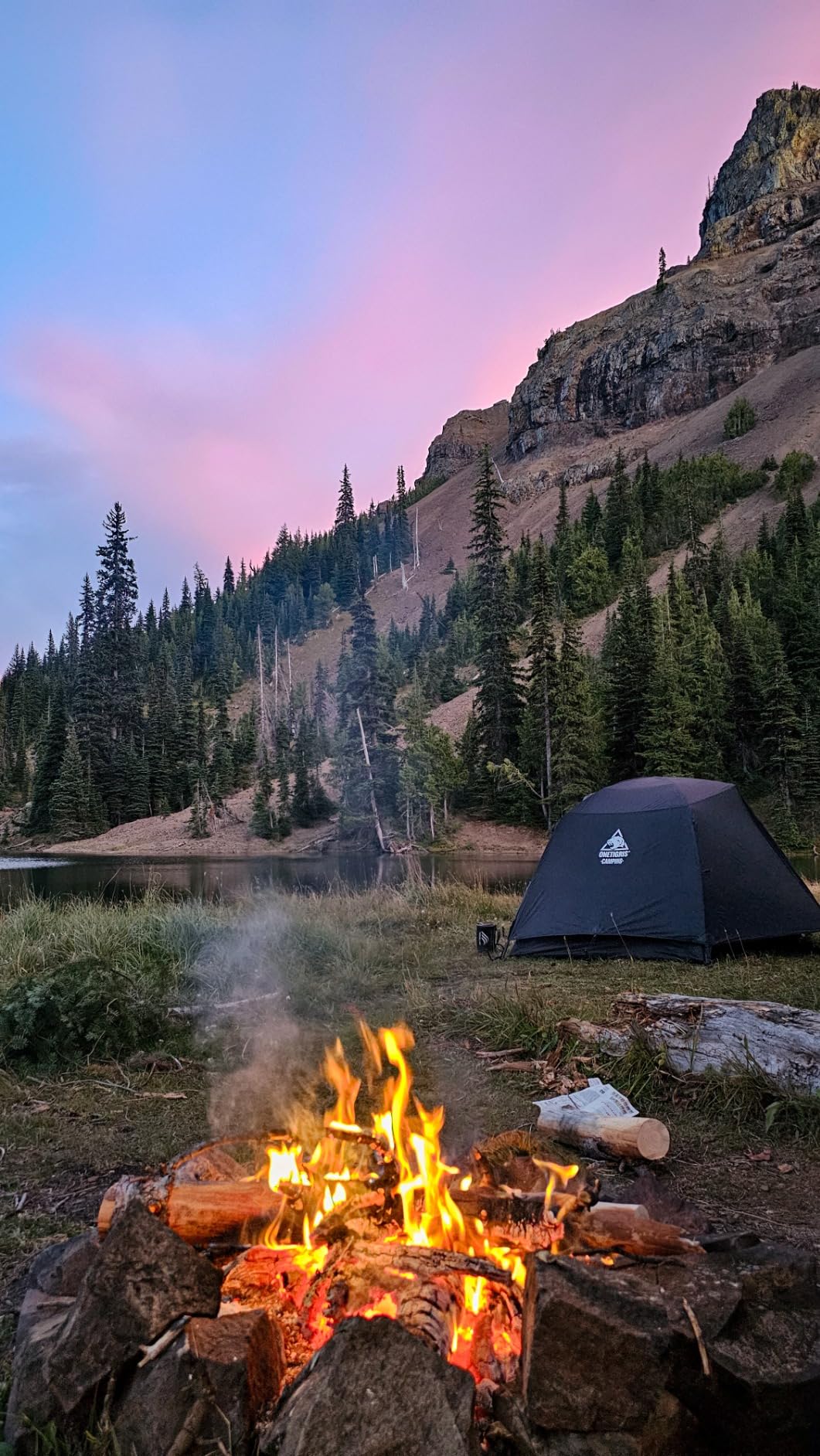
1
POMOLY Camping Hot Tent
Best Overall. When we rolled out to the mountains for our deep-winter trip—snow, wind, the whole nine yards—we knew we needed a serious shelter. We packed the POMOLY Camping Hot Tent and paired it with a titanium wood stove, and wow… we may never winter camp the same way again.
This tent is built with 70D ripstop polyester and boasts a 2500mm waterproof rating, but that’s just the start. What made it stand out was the integrated fireproof groundsheet—yes, really. We could set our stove inside and not worry about stray sparks or melted flooring. It’s made from silicone and fiberglass cloth, and it handled the heat beautifully.
Setup was easier than expected given the tent’s size. Two aluminum alloy poles and some solid guy lines later, we had a surprisingly sturdy basecamp that stood strong even when the wind picked up. We also swapped out the monster-sized stakes for MSR Groundhogs to save some weight—worth it.
Inside, we had space for two adults, gear, and even some lounging around. The dual-door setup made entry and exit a breeze, even with the stove glowing in the middle. Heat retention was next-level—once the fire got going, we were in a warm, almost sauna-like bubble while snow piled up outside. We didn’t even zip up our sleeping bags some nights—it was that comfortable.
This tent is not for ultralight hikers or fair-weather campers. It’s for serious winter warriors who want to stay warm, dry, and safe even when Mother Nature shows her worst. At this price point, it’s an absolute steal compared to most other hot tents on the market.
Pros:
✅ Built for deep winter with stove compatibility
✅ Fireproof groundsheet for safe heating
✅ Outstanding heat retention and durability
Cons:
❌ Too heavy for non-car camping
Our Verdict!
From the above roundup of the Best Insulated Tents for Winter Camping, we chose the POMOLY Camping Hot Tent as the Best Overall option because of its amazing performance, spaciousness, user-friendliness, and value for money. Apart from that, there are two other options that we set aside based on one specific feature for each. Let’s see them below.
- Best Sturdiness: OneTigris Stella Tent
- Easiest Setup: Clostnature Libra Backpacking Tent
How to Choose the Best Insulated Tents for Winter Camping
Let’s be real—winter camping can go from magical to miserable fast if your tent can’t keep up. That’s why picking the right insulated tent is less about fancy marketing terms and more about the features that actually keep you warm, dry, and sane when temperatures drop and the wind starts howling. After freezing our toes off one too many times, we’ve learned what really matters.
Here are the three key things to look for when choosing top insulated tents for winter camping:
1. Thermal Insulation That Works—Not Just Hype
Not all insulation is created equal. Look for tents with built-in insulating materials like quilted walls, thermal liners, or double-layer construction that trap heat and block cold air. Bonus points if the insulated tent has a blackout design—it helps retain warmth and blocks early morning light so you can sleep in like a pro. Trust us, you’ll thank yourself when it’s 3 a.m. and your tent feels more like a cabin than a cold nylon shell.
2. Weatherproof Materials and Solid Structure
Winter weather doesn’t mess around. You want a tent that’s not only insulated but also waterproof and wind-resistant. Features like PU-coated polyester or Oxford fabric, taped seams, and reinforced pole systems make all the difference when snow starts falling or wind gusts kick up. Snow skirts are another win—they keep the cold draft from creeping under your tent, which is a total game-changer for heat retention.
3. Ventilation Without Losing Warmth
Here’s the balancing act: staying warm and preventing condensation inside your tent. The best insulated tents for winter camping feature mesh vents, double doors, or zippered windows that allow airflow without letting all the heat escape. Good ventilation keeps your tent dry, your gear fresh, and your sleep uninterrupted—because waking up to ice inside your tent walls? Not ideal.
P.S. You might also want to browse our exclusive roundup of 7 Best Camping Tents for Beginners: What to Look for in Your First Tent?
Are insulated tents worth it?
Yes, insulated tents are absolutely worth it if you’re camping in cold, snowy, or high-altitude conditions. Unlike standard tents, they’re designed to trap body heat, block icy drafts, and reduce condensation—keeping you warmer, drier, and more comfortable through the night. Whether you’re using built-in insulation, thermal liners, or stove-compatible hot tents, the difference in warmth and sleep quality is dramatic. For anyone serious about winter camping, an insulated tent isn’t a luxury—it’s a smart investment in comfort and survival.
What kind of tent is best for cold weather?
The best tent for cold weather is a 4-season insulated tent designed specifically for winter conditions. These tents feature thicker fabrics, reinforced poles, snow flaps, and heat-retaining layers that block out wind, snow, and freezing temperatures. Some even support wood stoves for extra warmth. Look for models with double-wall construction, low-set vents for condensation control, and waterproof coatings to stay dry in storms. A true winter tent isn’t just about surviving the cold—it’s about staying warm, dry, and protected when the weather gets brutal.
What is the best material to insulate a tent?
The best material to insulate a tent is quilted or layered polyester with thermal insulation, often combined with aluminum-coated fabric or heat-reflective linings. These materials trap body heat, block cold air, and reflect warmth back inside—creating a cozy, cocoon-like environment even in freezing temperatures. Some high-end tents also use TPU-coated fabrics for added waterproofing and insulation without adding bulk. For serious winter camping, look for tents with built-in insulation panels or ones that support thermal liners for maximum cold-weather performance.
